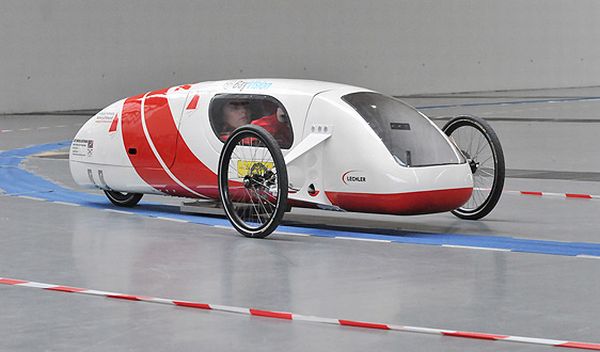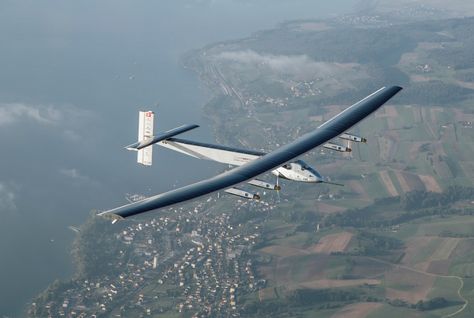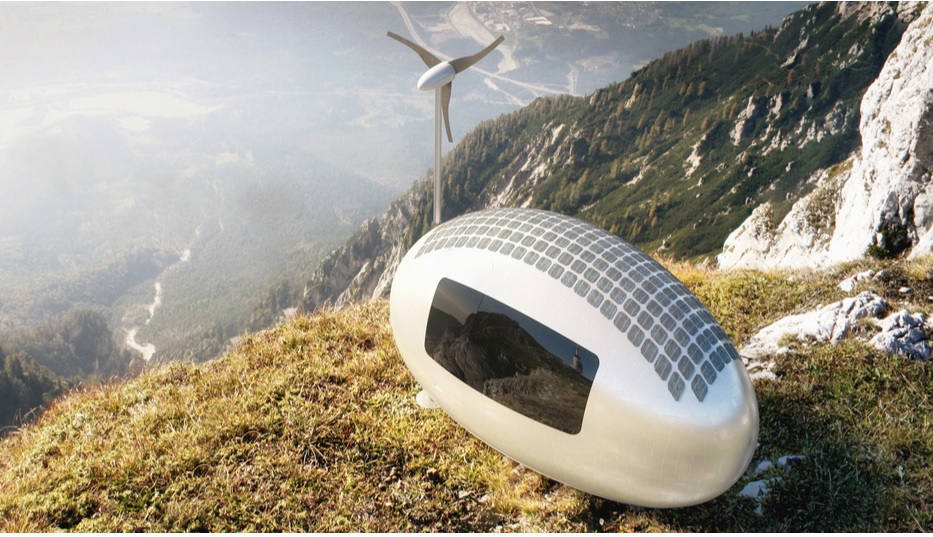
A group of German students has taken the idea to built an electric vehicle, called the E-Quickie, which runs on wireless power transmission. The technology is also design to keep mobile devices charged and ready without plugin.
Looking a little bit like at recumbent bike with a driver’s cabin, the E-Quickie was built by students at the Karlsruhe University of Applied Sciences (HsKA) and gets energy from electric conducting paths on the ground. It has receivers underneath and is taking energy from the tracks through electric induction and directing it to the car’s electrical hub drive.
The project was divided into slices. One student took care of setting up the racing track, which was provided by the firm SEW, in Bruchsal. Two others, were dedicated to the vehicle’s energy absorption and the safety of the entire system.
They designed the individual vehicle components, such as the steering and braking system and the chassis, using high-tech materials. Keeping the weight of the electric vehicle to a minimum they used carbon fiber to get an aerodinamic shape. The construction of the electric vehicle was optimized by computer in a virtual wind channel.
The end result was a three-wheeled vehicle that weighs just 60kg (132lb). However, Prof. Jürgen Walter from the faculty of Mechanical Engineering and Mechatronics and head of the project is confident this can be reduced to 40kg (88lb) through further optimization.
“With other vehicle types you have a weight ratio between driver and vehicle of 1:10/1:15. We’re aiming for a ratio of 1:2 through further development of the E-Quickie,” said Walter.
Even though the electric vehicle’s motor only has a horsepower of 2kW, its light weight means it is still able to reach a speed of 50km/h (31mph). Even though the electric vehicle draws its power from the track, it still has batteries onboard. However, these serve only as a buffer and are therefore much smaller than those found in other electric vehicle which draw energy from batteries exclusively.
“The aim was not only to show how quickly you can move around with the E-Quickie, but most of all how energy efficient the car is”, explains Walter. “We went to the start with half-filled batteries and returned with full ones.” For what then are batteries used for in this system of energy transfer? As soon as the car leaves the electrical conductor tracks, the power supply to the motor is interrupted. “Here the small accumulators then jump on-board the E-Quickie as an energy buffer,” explains Walter, “for example when it’s driven into the garage.”
The team plans to use the test track at the HsKA campus to continue optimizing the vehicle for reduced weight and energy consumption. How do you appreciate the idea, write a comment ?
Via Gizmag



